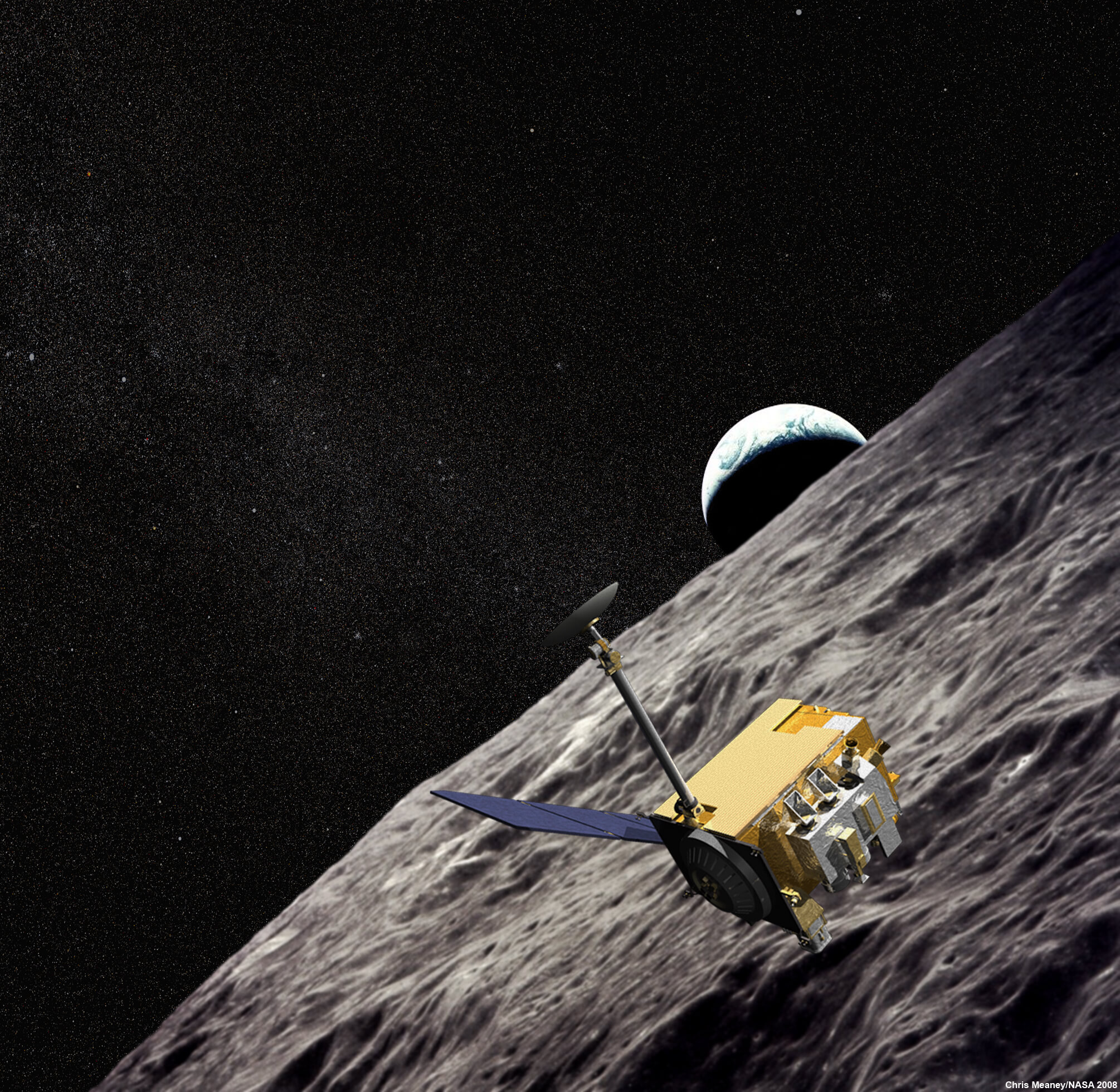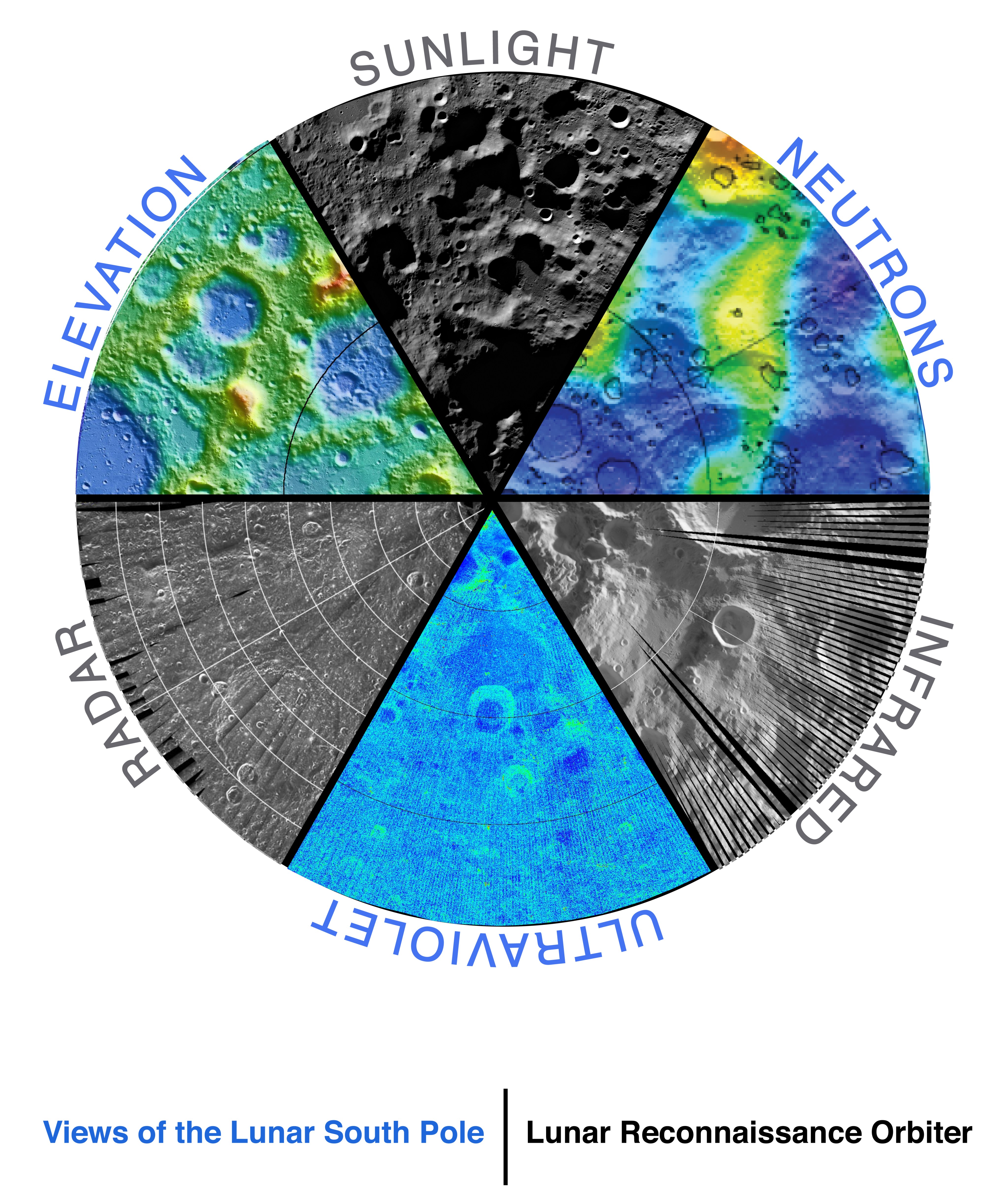LRO Science
Achieving Goals
LRO has already collected as much data as all other planetary missions combined. This volume of data is possible because the Moon is so close and because LRO has its own dedicated ground station and doesn't have to share time on the Deep Space Network. The science goals that had been set are being met, and questions are being answered.
"Before LRO, we actually knew the shape of Mars better than we knew the shape of the moon, our nearest neighbor. Because of LRO, we now have detailed maps of both the near side and far side of the moon."
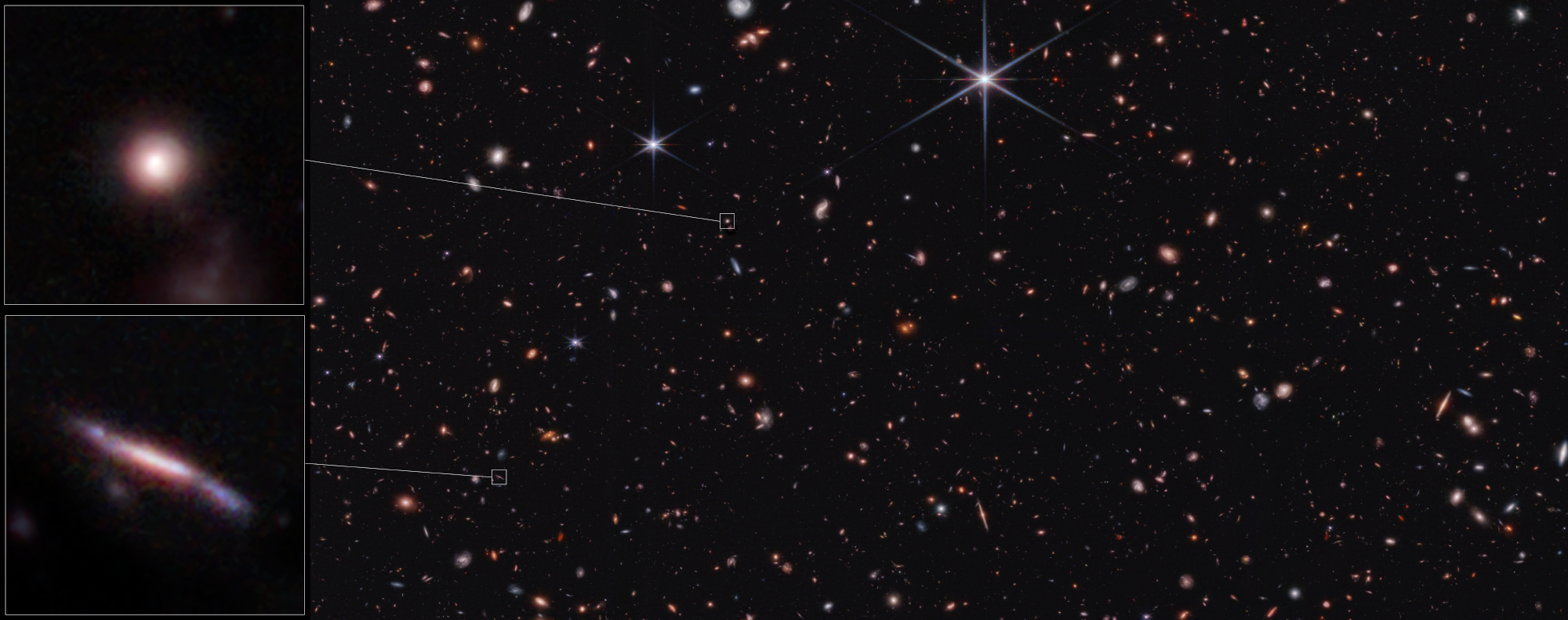
John Keller
LRO Project Scientist
Topographic Maps
A topographic map of the Moon based on data gathered by the Lunar Orbiter Laser Altimeter (LOLA) instrument is the most accurate topographic map of the Moon to date. The final set of data from the exploration phase of the mission was released to the NASA Planetary Data System.

The Lunar Radiation Environment
A top priority of the NASA Lunar Reconnaissance Orbiter (LRO) mission is the characterization of the global lunar radiation environment and its biological impacts and potential mitigation, as well as investigation of shielding capabilities and validation of other deep-space radiation mitigation strategies involving materials.
The Cosmic Ray Telescope for the Effects of Radiation (CRaTER ) instrument characterizes the global lunar radiation environment and its biological impacts by measuring galactic and solar cosmic ray radiation behind a "human tissue-equivalent" plastic. CRaTER discovered a previously unmeasured source of hazardous radiation coming from the moon itself. The radiation reportedly comes from the partial reflection of galactic cosmic rays off the moon surface.
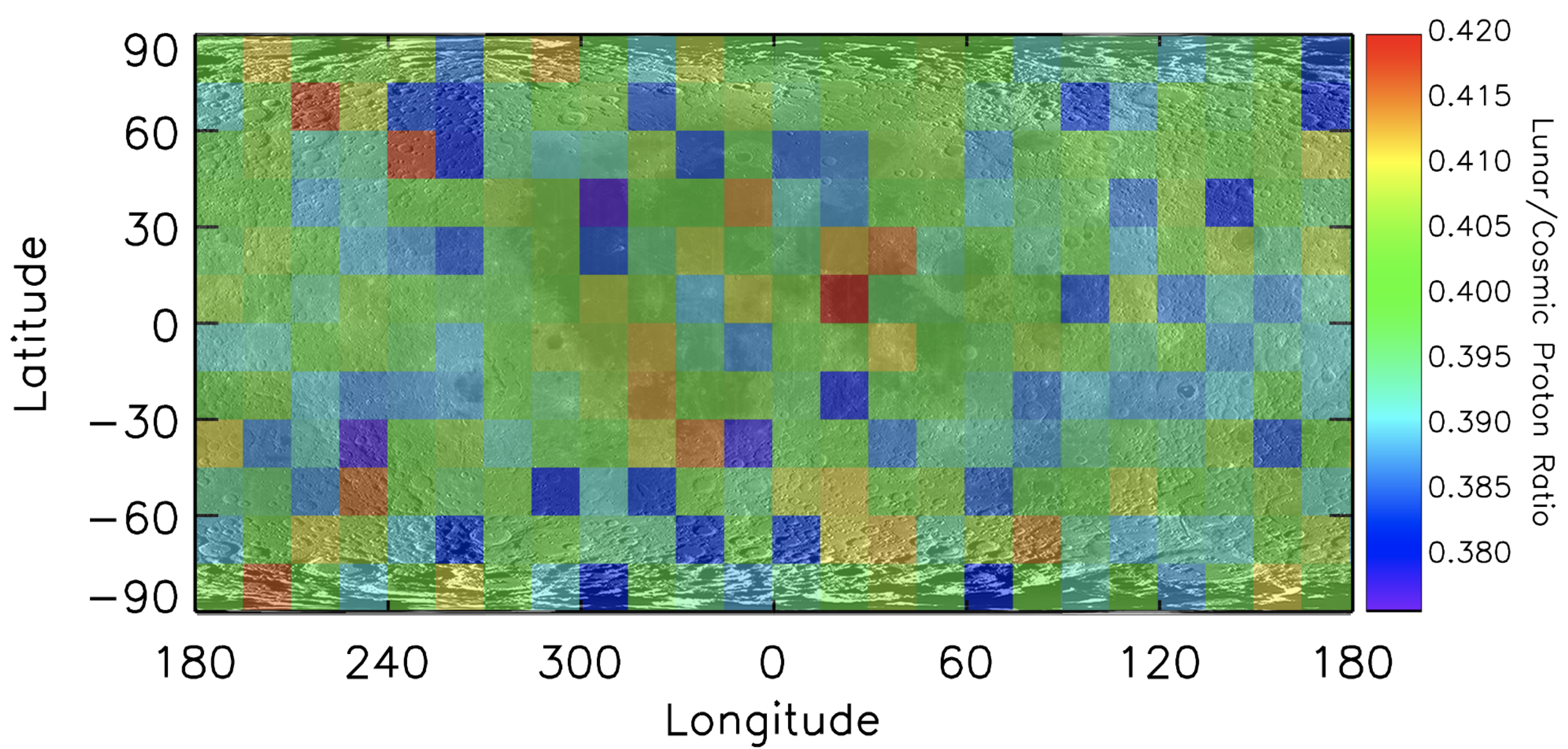
Evaluating the Biological Imacts
CRaTER is able to observe how radiation interacts with a tissue-equivalent plastic known as TEP. The TEP detector is able to mimic radiation doses within humans that would be delivered if a person was on the moon. These findings document, wall-to-wall, different effects and instrument responses with some of the best long-term measurements ever made of radiation in deep space.
Providing the first highly accurate 3D Lunar Maps
Anaglyphs are now being used to better understand the 3-D structure of the lunar surface. An "anaglyph" is the stereoscopic 3D effect achieved by means of encoding each eye's image using filters of different (usually chromatically opposite) colors.. These images can be viewed in three-dimensions using red-blue/green glasses.
Scientists using the camera aboard NASA's Lunar Reconnaissance Orbiter are acquiring stereo images of the moon in high resolution (0.5 to 2 meters/pixel) that provide 3-D views of the surface from which high resolution topographic maps are made. The Lunar Reconnaissance Orbiter Camera Narrow Angle Camera (LROC NAC) team from the University of Arizona and Arizona State University are currently developing a processing system to automatically generate anaglyphs from most of these stereo pairs.
LROC acquires stereo images by targeting a location on the ground and taking an image from one angle on one orbit, and from a different angle on a subsequent orbit.
The LROC NAC anaglyphs make lunar features such as craters, volcanic flows, lava tubes and tectonic features jump out in 3-D.
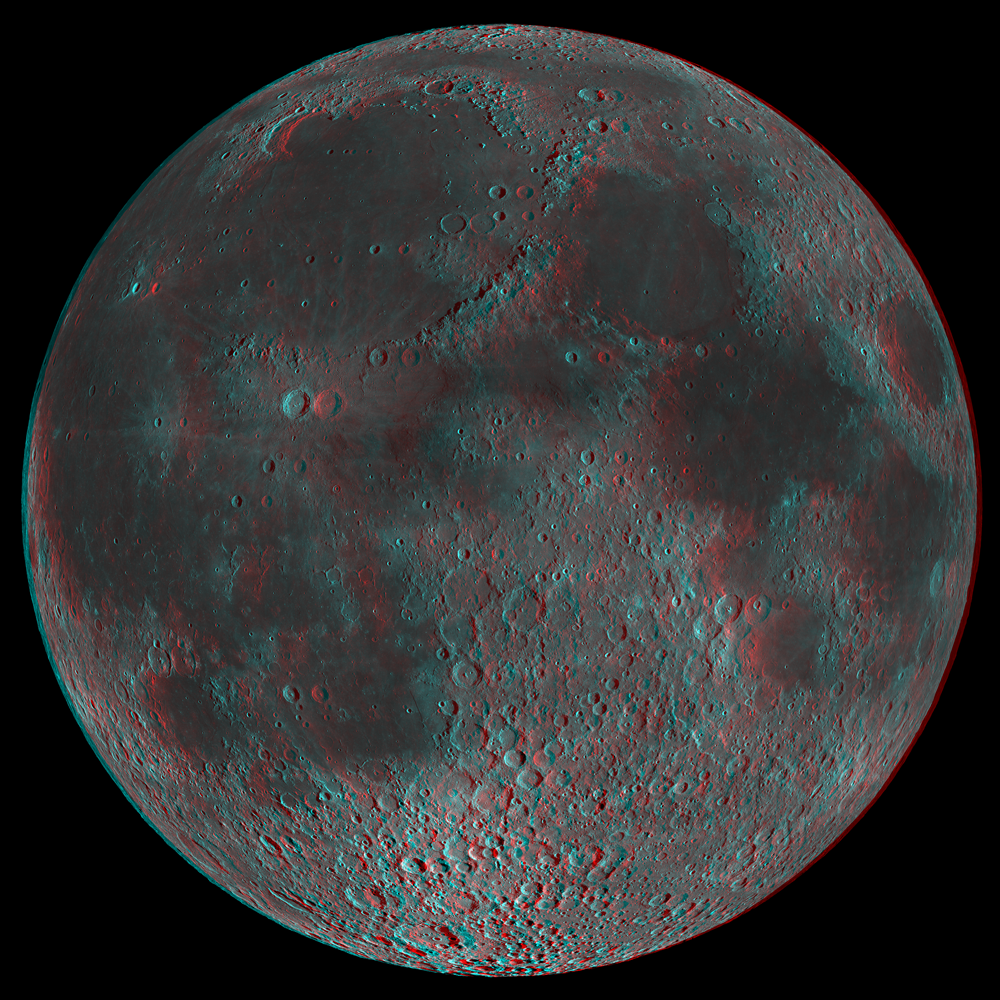
Mapping Mineralogy Across the Moon
The crust of the Moon is made up of two main types of rock, anorthosite and basalt. Anorthosite is light in color because it is made up of a light-colored mineral called plagioclase feldspar. Basalt is dark in color because it contains the iron-bearing minerals pyroxene, olivine and ilmenite, along with volcanic glass. The iron present in these minerals tend to absorb light, making them appear dark. The light and dark areas on the Moon are composed of these rock types.
The Diviner Lunar Radiometer Experiment revealed the presence of lunar soils with compositions more sodium rich than that of the typical anorthosite crust. Diviner identifed quartz, silica-rich glass, and alkali feldspar at four of these unique, nearside sites.
The widespread nature of these soils reveals that there may have been variations in the chemistry and cooling rate of the magma ocean which formed the early lunar crust, or they could be the result of secondary processing of the early lunar crust.
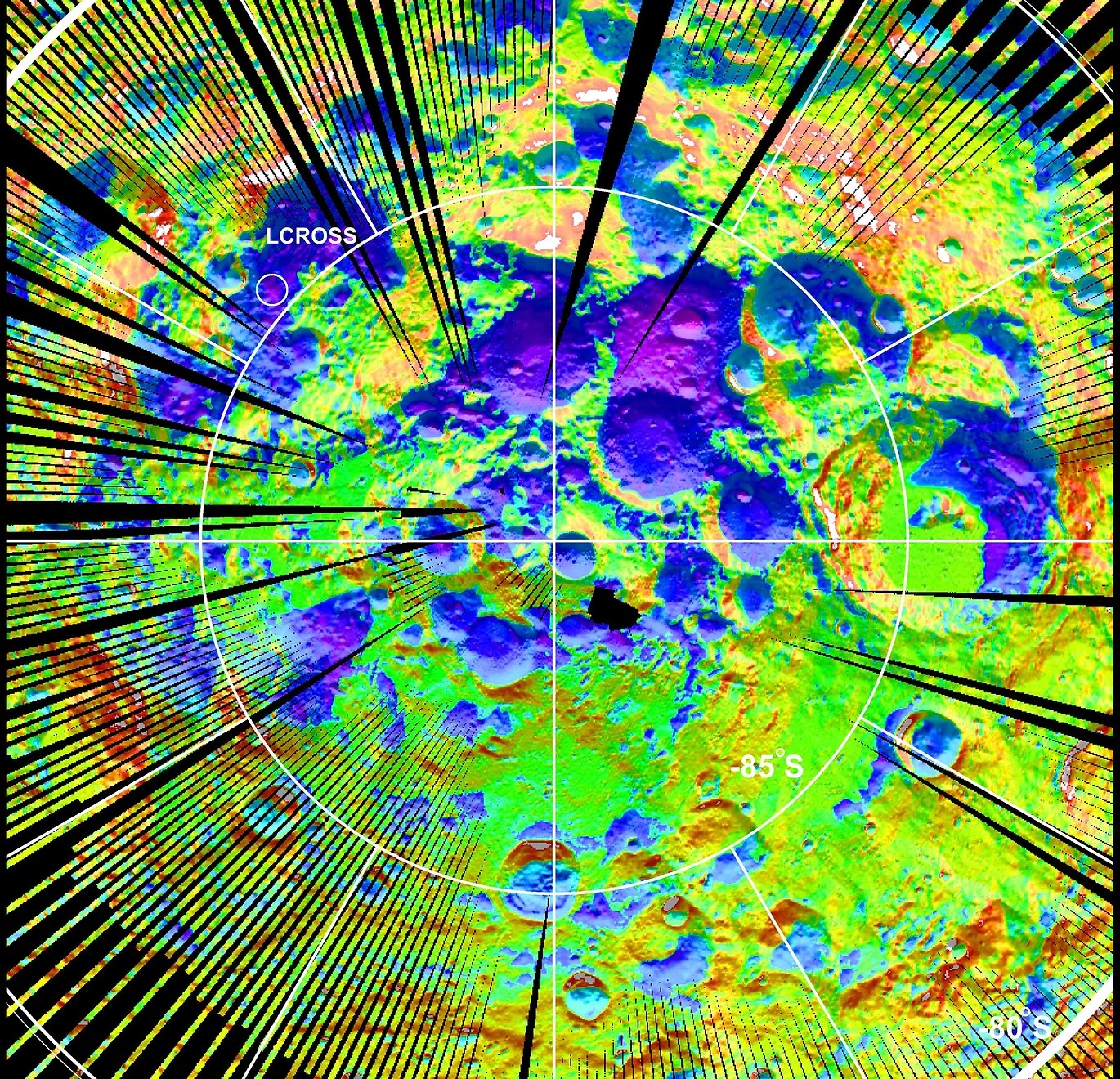
Provide an Assessment of Features for Landing Sites
The continuing observations of historic hardware and impact craters are not just interesting from a historical standpoint - each image adds to our knowledge of lunar science and engineering, particularly cartography, geology, and photometry. Making sure that the lunar cartographic network is accurate is a critical component for planning future lunar missions for both human and robotic exploration of the Moon. The historic spacecraft serve as benchmarks. When new images arrive and final ephemeris is in hand we can check if the hardware has moved.
NASA plans to land humans at the Moon's south pole by 2024.
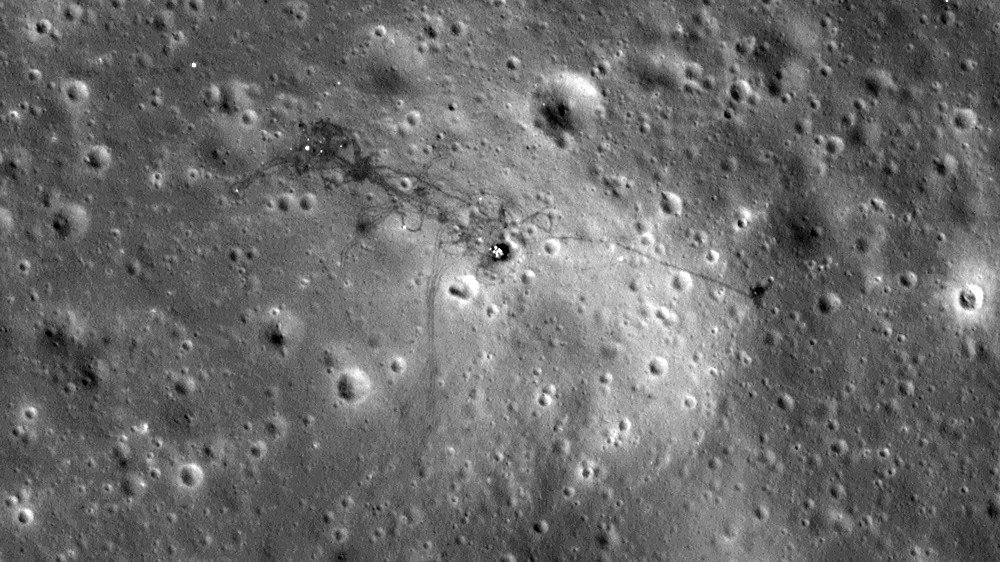
Searching for Polar Volatiles (Especially Water Ice)
LRO looks for water using its Lunar Explorer Neutron Detector (LEND) instrument, which detects the presence of hydrogen atoms by counting neutrons released from the moon’s soils. LRO particularly focuses on the moon's poles to search for water or ice that could exist in permanently shadowed craters. A bottle of one of the most expensive brands of water costs $40, and is presented in a frosted glass container decorated with crystal. On the moon, a bottle of water would run about $50,000, and forget about that heavy crystal glass. That's because it costs around $50,000 per pound to launch anything to the moon. Discovering water on the moon would be like finding a gold mine.
In fact, scientists have discovered evidence for water or hydrogen, a component of water, in special places on the moon. Since the moon is not tilted much from its rotation axis, the depths of certain craters in the lunar poles may not have seen the sun for billions of years.

Data Products
Find the LRO maps and data that you are looking for with this collection of resources.
Learn More